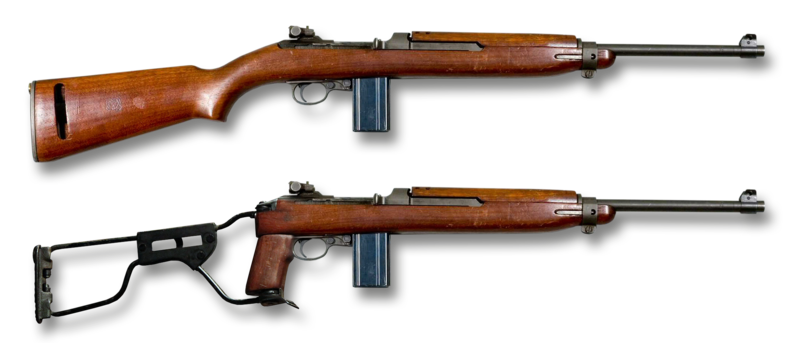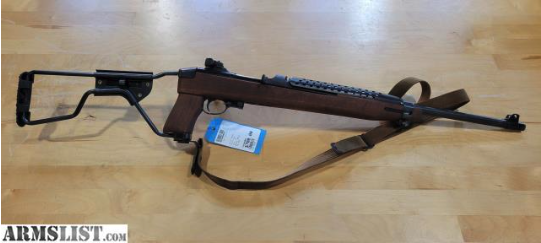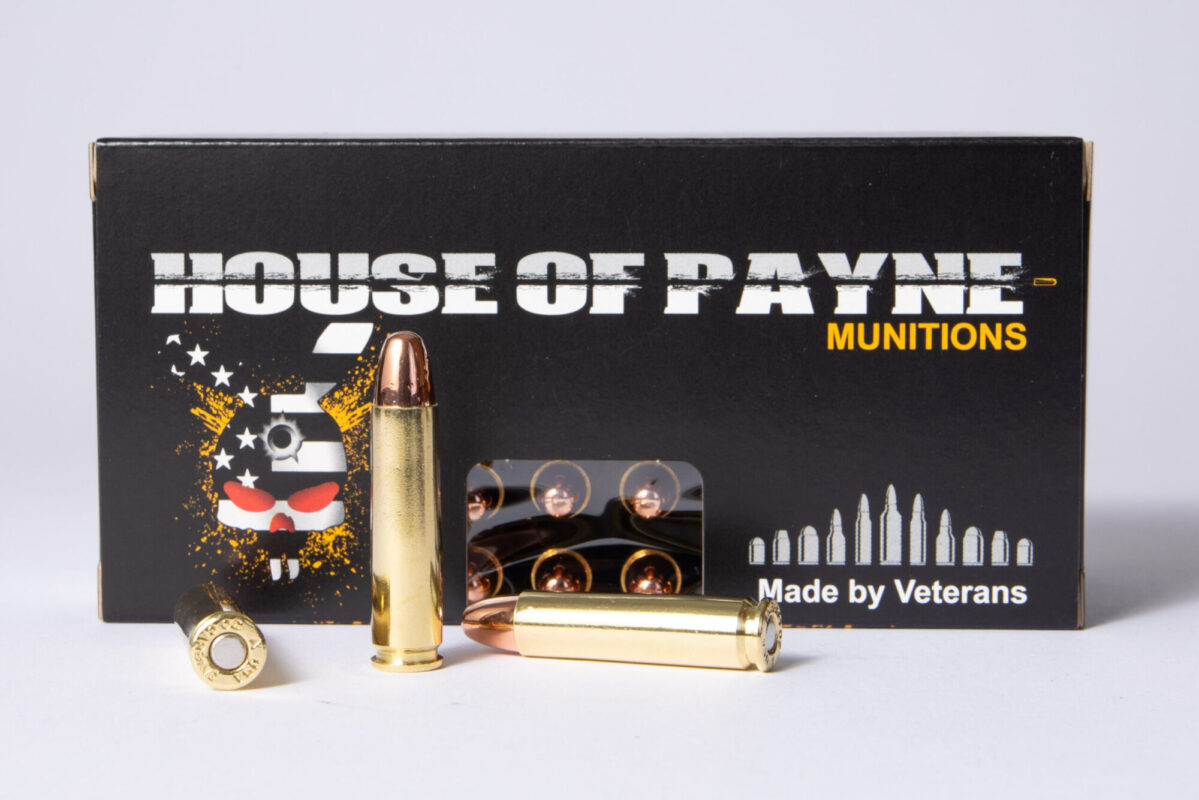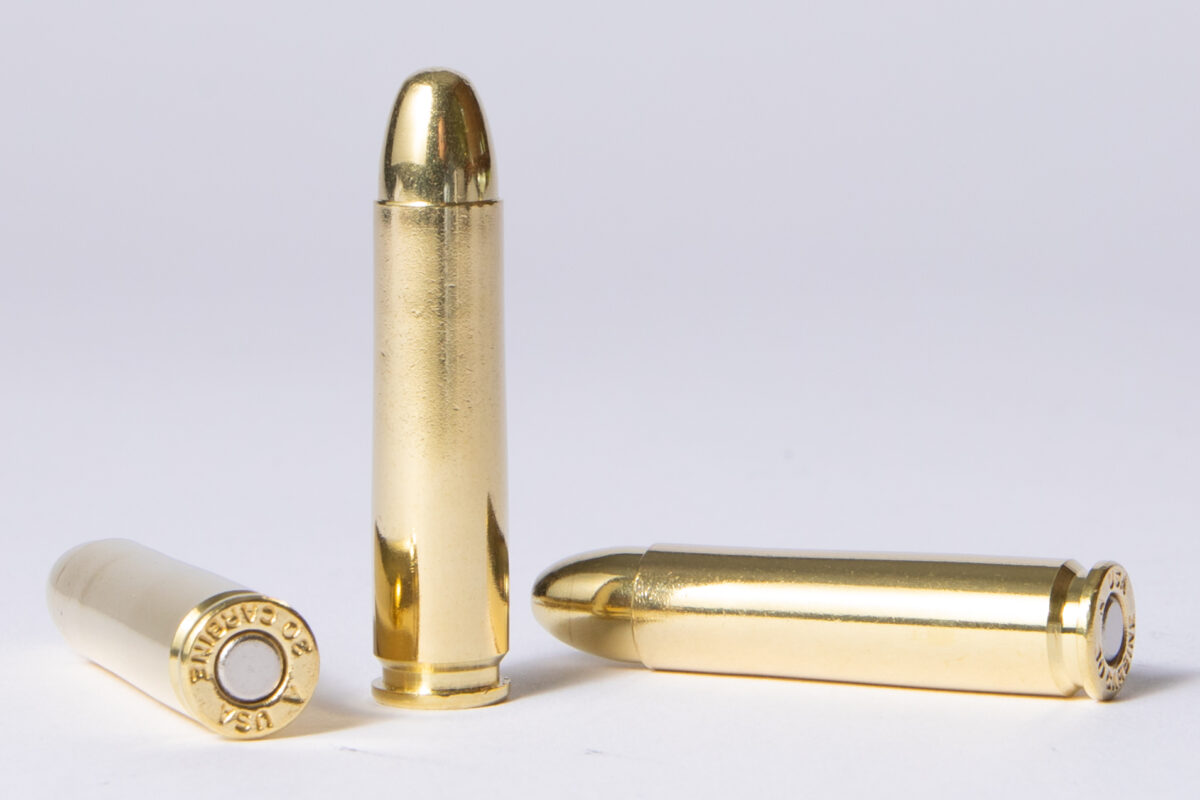HOP Blog
30 Carbine Ammo: Ammunition Designed for War
Within this blog post, we not only uncover the historical significance of 30 Carbine ammo but also talk a bit about how we are leading the charge in redefining 30 Carbine ammunition for modern applications.
We’ll take a look at the origins and wartime use of 30 Carbine ammo and examine how HOP Munitions is pushing the envelope of performance and reliability for this iconic ammunition.
Origin Story of 30 Carbine
The .30 Carbine, a compact and lightweight cartridge, has a fascinating origin story closely tied to the needs and challenges faced by the U.S. military during World War II.
It was developed to address specific requirements that arose during the war, and its adoption marked a significant moment in the evolution of firearms technology.
As World War II raged on, the U.S. military faced a unique set of challenges in equipping its troops. The standard issue rifle at the time was the M1 Garand, chambered in .30-06 Springfield, which was a powerful and effective cartridge but also relatively heavy and unwieldy.

Infantrymen, especially those serving in roles such as tank crews, paratroopers, and support troops, needed a more compact and lightweight weapon that still offered reasonable firepower.
The Role of .30 Carbine Ammo During WWII
This is where the .30 Carbine ammunition came into play. Developed primarily for the M1 Carbine, a lightweight semi-automatic rifle, the .30 Carbine cartridge was designed to provide soldiers with a weapon that struck a balance between power and portability. It fired a smaller and less powerful round compared to the .30-06, but it was more manageable and suitable for short-to-medium-range engagements.
The .30 Carbine round, with its approximately 110-grain bullet, offered better recoil control and was easier to handle in close quarters. This made it an ideal choice for soldiers who needed a compact and maneuverable firearm.
It was especially favored by paratroopers, who appreciated its lightweight design and the ability to carry more rounds due to the reduced weight of the ammunition.
Development and Adoption by the U.S. Military
The development of the .30 Carbine ammunition began in the early 1940s, and it quickly gained recognition for its suitability for certain military applications.
The M1 Carbine, designed to utilize this new cartridge, was adopted by the U.S. military in 1941. This marked the official entry of the .30 Carbine into service during World War II.

The combination of the M1 Carbine and .30 Carbine ammunition provided soldiers with a valuable tool for various roles, including as a personal defense weapon for officers and support troops. Its ease of use, reduced recoil, and maneuverability made it a versatile firearm on the battlefield.
In summary, the .30 Carbine ammunition’s origin and role during World War II were closely tied to the evolving needs of the U.S. military. It was developed to address the challenges of providing a compact and lightweight firearm option without sacrificing too much firepower.
The adoption of the .30 Carbine and its associated rifles showcased the military’s commitment to equipping its troops with the most suitable tools for the diverse demands of the battlefield during this pivotal period in history.
Post-War Transition to the Civilian Market
The transition of .30 Carbine ammunition from military use to the civilian firearms market is a significant chapter in its history.
After World War II ended, there was an abundance of surplus M1 Carbines and .30 Carbine ammunition, both of which were in high demand by returning veterans and civilian shooters.
This led to the widespread availability of firearms chambered in .30 Carbine and a continued role for the cartridge in the post-war era.
How .30 Carbine Ammo Entered the Civilian Firearms Market
The surplus M1 Carbines and ammunition from the war played a pivotal role in introducing .30 Carbine ammunition to the civilian market.
The end of the war brought about the demilitarization and release of surplus military firearms and ammunition for civilian sale. These surplus M1 Carbines, originally designed for military use, were made available to civilians at affordable prices.

This surplus market allowed many civilians to acquire these firearms, which were chambered in .30 Carbine, making the ammunition readily accessible to civilian shooters.
Additionally, ammunition manufacturers recognized the potential civilian demand for the .30 Carbine cartridge. They began producing commercial ammunition specifically designed for sporting and civilian use.
This ammunition was loaded with various bullet types, including full metal jacket, soft point, and hollow point rounds, catering to different shooting activities such as target shooting, hunting, and self-defense.
Sporting Rifles Chambered in .30 Carbine
The popularity of the .30 Carbine cartridge in the civilian market led to the production of sporting rifles chambered in this cartridge. These firearms were designed with civilian shooters in mind and incorporated features that appealed to recreational shooters, hunters, and sportsmen.
Some notable examples of sporting rifles chambered in .30 Carbine included the Ruger Blackhawk and the Winchester M1 Carbine, which was a commercial version of the military M1 Carbine. These rifles were well-suited for various shooting activities, including hunting small to medium-sized game and competitive shooting sports.
The .30 Carbine cartridge’s availability in the civilian market also contributed to its acceptance as a versatile and practical round for civilian shooters. Its mild recoil and reasonable power made it a popular choice for those who wanted a reliable and easy-to-handle firearm for recreational shooting and practical purposes.
The transition of .30 Carbine ammunition from military use to the civilian firearms market was facilitated by the surplus of M1 Carbines and ammunition after World War II. The availability of surplus firearms and the production of commercial ammunition specifically for civilian shooters ensured that the .30 Carbine cartridge continued to be relevant and widely used long after its military service.
Sporting rifles chambered in .30 Carbine further solidified its place in the civilian firearms market, making it a versatile and accessible cartridge for various shooting enthusiasts.
30 Carbine Ballistics: What You Need to Know
Understanding the ballistics of the .30 Carbine cartridge is crucial for anyone planning to shoot, hunt, or compete with firearms chambered in this caliber. This compact round has its own unique characteristics and performance capabilities that distinguish it from other cartridges. Here’s what you need to know about the ballistics of the .30 Carbine.
Caliber and Cartridge Specs:
- Caliber: The .30 Carbine cartridge has a caliber of .30 inches (7.62mm).
- Case Type: It features a rimless, bottlenecked case.
- Overall Length: The typical overall length of a .30 Carbine cartridge is around 1.69 inches (43mm).
- Bullet Weight: Bullet weights for .30 Carbine ammunition can vary but are typically around 110 grains (7.1 grams).
Muzzle Velocity:
- The .30 Carbine cartridge is known for its relatively high muzzle velocity compared to pistol cartridges. It typically achieves muzzle velocities of around 1,900 to 2,000 feet per second, depending on the specific load and barrel length.
Muzzle Energy:
- The muzzle energy of the .30 Carbine cartridge is approximately 900 to 1,000 foot-pounds. While this is significantly less than many rifle cartridges, it is considerably more powerful than most pistol rounds.
Trajectory:
- Due to its moderate muzzle velocity, the .30 Carbine cartridge follows a trajectory that is relatively flat out to intermediate ranges. This makes it suitable for short to medium-range engagements.
- However, at longer distances, the trajectory begins to drop more rapidly compared to high-velocity rifle cartridges, requiring shooters to compensate for bullet drop.
| Range (Yards) | Velocity (FPS) | Energy (Ft.-LB) | Trajectory (inches) | Come up (MOA) | Come up (MIL) |
| 0 | 1950 | 929 | -1.5 | 0 | 0 |
| 50 | 1776 | 771 | 0.6 | -1.2 | -0.4 |
| 100 | 1615 | 637 | 0 | 0 | 0 |
| 150 | 1467 | 526 | -4 | 2.5 | 0.7 |
| 200 | 1334 | 435 | -12 | 5.7 | 1.7 |
Accuracy:
- The .30 Carbine cartridge is generally accurate within its effective range, which is typically considered to be up to 200 yards (183 meters) for most purposes. Beyond this range, bullet drop and wind drift become significant factors.
Terminal Performance:
- The terminal performance of the .30 Carbine cartridge is adequate for hunting smaller game and self-defense purposes. It is known for reliable expansion and penetration, particularly when using appropriate ammunition.
Recoil:
- One of the notable features of .30 Carbine is its mild recoil, which makes it pleasant to shoot, especially for those who may be sensitive to heavy recoil from larger calibers. The reduced recoil contributes to its popularity among many shooters.
The .30 Carbine cartridge offers a unique blend of characteristics that make it suitable for specific shooting and hunting applications.
Its moderate muzzle velocity, flat trajectory within its effective range, and manageable recoil make it a versatile cartridge, though best suited for short to medium-range engagements.
Modern Applications for 30 Carbine Ammo
While the .30 Carbine ammunition was initially developed for military use during World War II, it has found new life in the civilian world with modern applications. Two prominent uses for .30 Carbine ammo are target shooting and competition, but hunting comes in at a close third.
Target Shooting and Competition:
The .30 Carbine cartridge has gained popularity among target shooters and competitive shooters for several reasons:
- Mild Recoil: One of the most appealing aspects of the .30 Carbine round for target shooters is its relatively mild recoil. This makes it a great choice for shooters, including beginners, who seek a more comfortable shooting experience during extended range sessions.
- Versatility: The .30 Carbine cartridge is versatile and can be loaded with different types of bullets, including full metal jacket, soft point, and hollow point. This versatility allows shooters to tailor their ammunition selection to the specific requirements of their chosen shooting discipline.
- Historic Appeal: The association of the .30 Carbine with the iconic M1 Carbine, a legendary World War II firearm, adds a sense of history and nostalgia to the shooting experience. Many enthusiasts are drawn to the classic design and historical significance of the M1 Carbine and .30 Carbine ammo.
- Competitive Shooting: In various shooting sports such as 3-Gun competitions or vintage military rifle matches, firearms chambered in .30 Carbine are used. Shooters can test their marksmanship skills and compete against others using this classic cartridge.
Hunting with .30 Carbine:
While the .30 Carbine cartridge is not typically considered a top choice for big game hunting, it can be suitable for specific hunting scenarios, especially in regions with regulations that limit the use of high-powered rifle cartridges. Here are some considerations for hunting with .30 Carbine ammunition:
- Short to Medium Range: The .30 Carbine cartridge is best suited for hunting small to medium-sized game at short to medium ranges. It can be effective for taking down animals like deer, hogs, and coyotes when shot placement is precise.
- Legal Restrictions: In some areas, regulations may prohibit the use of high-velocity or high-powered rifle cartridges for hunting due to safety concerns. In such cases, hunters may turn to the .30 Carbine as a compliant option.
- Skill and Shot Placement: Effective hunting with .30 Carbine requires skill and careful shot placement, as the cartridge lacks the long-range capabilities of more powerful rifle cartridges. Hunters using .30 Carbine should be proficient marksmen capable of making ethical kills.
- Historic or Collectible Firearms: Some hunters appreciate the historical significance of using firearms chambered in .30 Carbine for hunting. They may choose to hunt with vintage rifles as a nod to the past.
30 Carbine ammunition, originally designed for military use, has found a place in modern shooting and hunting applications. Its mild recoil, versatility, and historical appeal make it an attractive choice for target shooting, competition, and certain hunting scenarios.
While it may not be the go-to cartridge for all hunting needs, it offers a unique and engaging experience for those seeking alternatives to high-powered rifle cartridges.
30 Carbine Ammo for Sale
Explore HOP’s expertly engineered 30 Carbine 110gr FMJ, a testament to ammunition excellence.
Drawing inspiration from the cartridges used during WWII, this product represents a blend of historical significance and technical excellence.
HOP Munitions, recognized as one of the leading sources for 30 carbine ammo in the U.S., brings you a product that promises both historical accuracy and peak performance.

Elevate your shooting experience with a choice trusted by professionals. Secure your 30 Carbine ammo from HOP Munitions now.


Do you sell bulk .30 carbine?